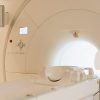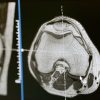$0.00
Unlocking the Wonders of MRI Coils: Types and Their Roles in Imaging
Magnetic Resonance Imaging (MRI) is a powerful medical imaging technique that allows physicians to visualize the internal structures of the body. A critical component of an MRI machine is the MRI coil, which plays a central role in acquiring high-quality images. MRI coils, also known as radiofrequency (RF) coils, come in various types, each designed for specific imaging purposes. This article explores the world of MRI coils, their types, and their functions in the imaging process.
What is an MRI Coil?
An MRI coil is an essential component of the MRI machine used to transmit radiofrequency pulses and receive the resulting signals from the patient’s body. These coils are responsible for generating images by emitting radio waves into the body’s tissues and capturing the emitted signals. The key functions of an MRI coil include transmitting RF energy for excitation and receiving RF energy for signal detection, allowing for the creation of detailed images.
Different Types of MRI Coils:
- Body Coils: These coils are designed to image large parts of the body, such as the chest or abdomen. Body coils are typically integrated into the MRI machine itself and are used for initial imaging. They provide general coverage but may not offer the high-resolution images required for detailed diagnosis.
- Surface Coils: Surface coils are smaller, more focused coils placed directly on or near the body part of interest. They are often used for specialized imaging of smaller regions, like extremities (knees, wrists) or specific organs (breasts, head). Surface coils can provide higher resolution and improved signal-to-noise ratio (SNR) for the area they cover.
- Head Coils: As the name suggests, head coils are designed specifically for imaging the brain. They are positioned around the patient’s head, providing precise imaging for neurological studies and brain scans. Head coils are integral for detecting even subtle anomalies within the brain.
- Cardiac Coils: These coils are tailored for cardiac imaging, focusing on the heart and blood vessels. Cardiac coils offer superior signal reception for clear visualization of the heart’s intricate structures and function. They are particularly valuable for diagnosing heart conditions.
- Breast Coils: Breast coils are dedicated to breast imaging and are specifically shaped to accommodate the anatomy of the breast. They improve the clarity of images for early breast cancer detection and characterization.
- Spine Coils: Spine coils are used to image the spine and spinal cord, ensuring high-resolution images for diagnosing spinal conditions, injuries, and diseases.
- Knee Coils: Knee coils are small and versatile, perfect for imaging the knee joint with precision. They offer detailed images for orthopedic assessments and identifying ligament or cartilage issues.
The Role of MRI Coils in Imaging:
MRI coils play a crucial role in improving image quality, resolution, and diagnostic accuracy. By optimizing the RF transmission and reception, these coils enhance the signal-to-noise ratio (SNR), which is essential for achieving clear, detailed images. Using the right coil for the specific region of interest allows radiologists and physicians to make accurate diagnoses and treatment decisions.
In conclusion, MRI coils are essential components of MRI machines, contributing to the quality and accuracy of medical imaging. The diversity of coil types allows healthcare professionals to tailor their imaging approach to the specific area of interest, ensuring that patients receive the best possible diagnostic information for their healthcare needs. Whether it’s a head coil for neurological studies or a breast coil for mammography, MRI coils are vital tools in the world of diagnostic medicine.
Recent Posts
Recent Comments
Join our newsletter
Get our emails for info on new items, sales and much more.
Register now to get latest updates on the newest parts!










